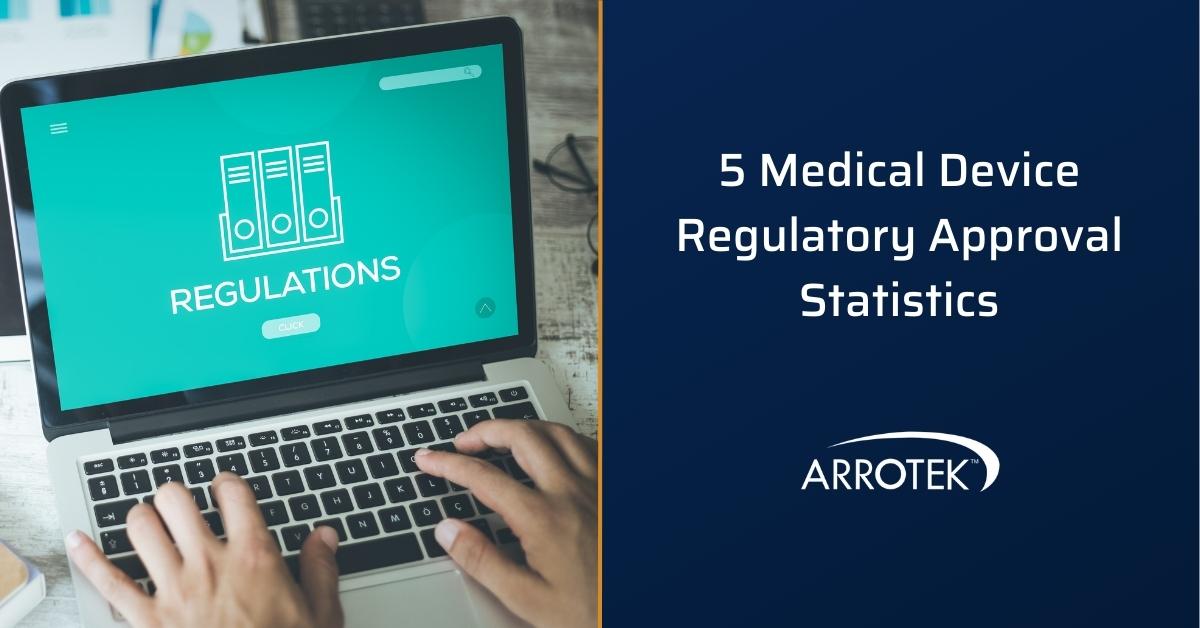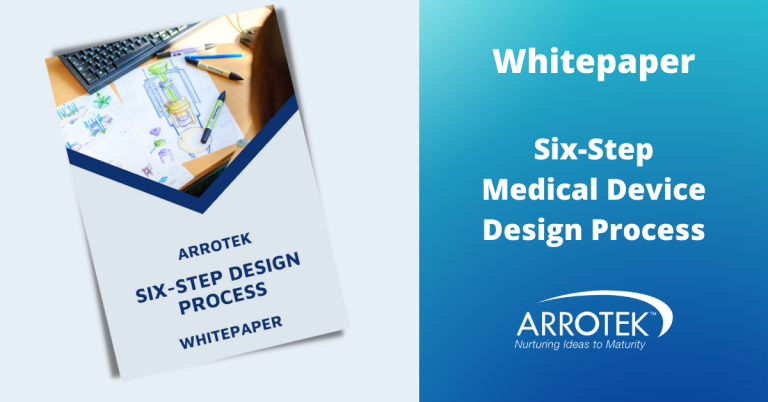Getting a new medical device product approved by regulators is complex and often challenging. What do the statistics tell us about the approval process for a new medical device? What can we learn, and how can you ensure your path to regulatory approval is as smooth as possible?
The following five statistics about the medical device regulatory approval process are not only informative, but also highlight the importance of getting expert support as early as possible.
1. The Average Time it Takes to Get an FDA 510(k) Decision is 5 Months
The most common regulatory pathway in the US is the FDA’s 510(k) application process. 510(k) submissions are used for low-to-moderate risk medical devices. Higher-risk medical devices go through a different premarket approval (PMA) process.
Focusing on 510(k) submissions, the FDA has a performance target of 90 days to issue a decision. However, the 90-day clock pauses if the FDA asks for further information. Therefore, the time it takes to get a decision on 510(k) applications is actually closer to five months. To be specific, the average time to issue a decision in 2021 was 147 days according to FDA data.
In the EU, the timescales are even longer, although this is because of the introduction of the new MDR (Medical Device Regulations). Once the new regulations bed in over the next few years, the time to get a decision is likely to reduce, but at the moment it is up to 18 months.
2. One-Third of FDA 510(k) Submissions Fail the Minimum Acceptability Check
One of the first things the FDA does when it receives a 510(k) submission is an acceptance for review check. This check is to confirm the submission meets the minimum acceptability threshold. It is largely an administrative check to ensure the submission has been completed properly. A 510(k) submission must receive an official acceptance for review before it can go to the substantive review stage.
For the year up to the end of September 2022, almost 32 percent of FDA 510(k) submissions failed this first acceptance for review check. In 2021, it was 35 percent.
It’s important to point out that most of the submissions go on to be accepted for a substantive review after the applicant makes amendments. However, failing this initial administrative check delays the process and adds costs.
3. Two-Thirds of FDA 510(k) Submissions Result in Requests for Additional Information
During the substantive review process, the FDA might decide that it needs more information from the applicant before it can make a decision. This is called an Additional Information (AI) request. For the year up to the end of September 2022, 67 percent of 510(k) submissions resulted in an AI request following the first regulatory review cycle.
AI requests add further delays, they can increase costs, and they are often avoidable.
4. One-in-Seven FDA 510(k) Submissions Don’t Obtain a Substantially Equivalent Decision
For the year up to the end of September 2022, 85 percent of 510(k) applications were issued with a Substantially Equivalent decision from the FDA. A Substantially Equivalent decision means the product has regulatory approval to be sold in the US market.
This means 15 percent of 510(k) submissions did not receive a Substantially Equivalent decision.
5. Nine-in-Ten Industry Leaders Now Plan to Prioritise the US Over the EU
We have already mentioned the current challenges in the EU with the introduction of the new MDR. An outcome of these challenges can be seen in a recent survey of medical device industry leaders. The participants in the survey have experience with the regulatory process in the EU under the previous regulatory system, but 23 percent said they would now prioritise the Japanese and Chinese markets. Almost 90 percent said they would also now prioritise US regulatory approval over the EU.
Getting Expert Regulatory Support Early in the Process
The above statistics highlight not only the timelines that exist to get a medical device regulatory approved, but also the complexities of the system. That said, many of the delays are completely avoidable.
To overcome the complexities, eliminate delays, and obtain approval in the shortest timeframe possible, it is important to get expert regulatory support.
We can help at Arrotek, as we have in-house regulatory expertise that covers the US, European, and other markets. We also have an approach to the delivery of our services that ensures we keep spare capacity, enabling us to meet client demands, even when timescales are short. Get in touch today to speak to a member of our team.





